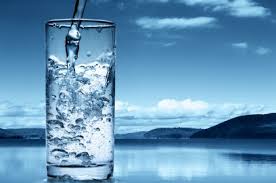 Community water systems are
required to test and monitor drinking water supplies to ensure safe and
good-tasting water. But what happens once the water has been piped into
towns, neighborhoods, and homes? Older homes may still have service lines
made of lead going into the home, which can cause lead to leach into the
water. The local water supply system should be able to confirm the presence
of lead service lines for homeowners. Older fixtures that contain lead, or
lead that was used to solder pipe joints, can also cause elevated lead
levels. Whenever possible, pipes and fixtures containing lead should be
replaced with new materials. Community water systems are
required to test and monitor drinking water supplies to ensure safe and
good-tasting water. But what happens once the water has been piped into
towns, neighborhoods, and homes? Older homes may still have service lines
made of lead going into the home, which can cause lead to leach into the
water. The local water supply system should be able to confirm the presence
of lead service lines for homeowners. Older fixtures that contain lead, or
lead that was used to solder pipe joints, can also cause elevated lead
levels. Whenever possible, pipes and fixtures containing lead should be
replaced with new materials.
Many homes built before the 1960s have galvanized steel pipes. While
galvanized pipes do not create chemical contaminants on their own, they are
susceptible to severe corrosion which can flake off and clog taps and
faucets. In some instances lead can build up inside galvanized pipes,
especially if the service line into the home is or was made of lead. To be on
the safe side, it is best to have all galvanized piping replaced.
Another water quality concern is what are known as emerging contaminants,
which, if present in a home, usually occur in very low level amounts. These
fall into two general categories: health effects and aesthetic effects.
Emerging contaminants affecting health include detergents, pesticides, and
medications. Other contaminants that don't affect health may adversely alter
water taste, odor, and/or color. Home filtration systems are the most common
means of reducing emerging contaminants. Options include faucet or pitcher
filters, plumbed, and reverse-osmosis filters that treat the entire home's
water supply. Any filtration system considered should be listed as meeting
national standards for reducing multiple contaminants.
Well Water Quality
While most people in North America get their water from community water
systems, there are still millions who rely on well water at home. Water
sourced from a well should be tested on a regular basis for contaminants such
as bacteria and metals. If well water coming from the tap tests high for
lead, it could be that the water in the well is too acidic, which causes lead
to leach from pipes and fixtures. An acid neutralizing system can usually
alleviate this problem without the need to replace pipes and fixtures. Other
possible well water quality problems can be avoided by making sure wells are
located away from septic tanks, livestock, and pooling water runoff. Well
maintenance should not be overlooked, so that any issues can be addressed
before they cause health problems for the home's occupants.
Information provided by Doug Carlaw, Pillar to Post Home Inspections
|
No comments:
Post a Comment
Note: Only a member of this blog may post a comment.